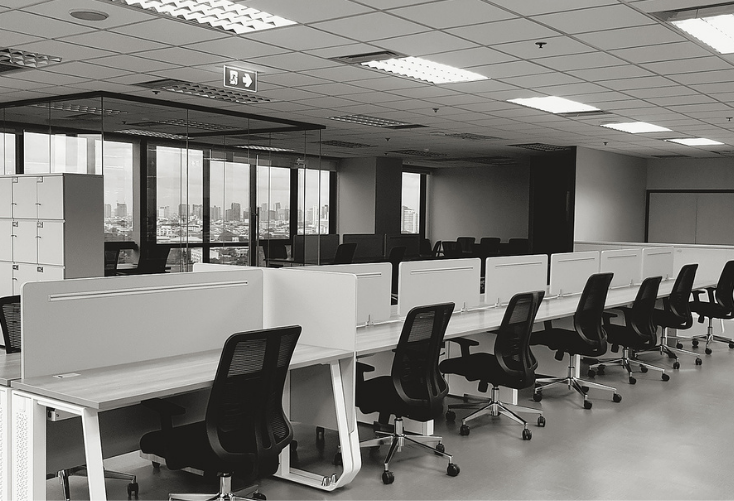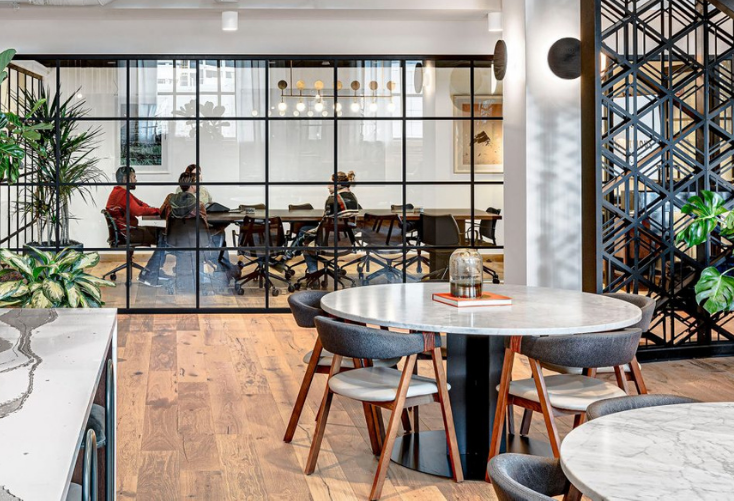Hand selected flexible workspace news from the most reliable sources to keep you ahead of the pack. We find all the latest news, so you don’t have to. Morning and afternoon updates. Stay in the know.
- How Freelancers Can Thrive In Remote Positions NEW
- The Evolution Of Meetings NEW
- The Long-term Impact On The Future Of Offices NEW
- How Remote Working Can Hurt Work Culture
- Will WeWork Seize New Opportunities?
- Cushman & Wakefield Teams Up With Industrious
How Freelancers Can Thrive In Remote Positions
A study from Upwork has found that freelancing is becoming a notable career path, with 36% of the workforce already in this position. As remote working becomes more widely accepted, we can expect to see a continued uptick in freelancing.
While many freelancers work remotely, there can be downfalls to this work arrangement such as feelings of isolation and other mental health problems. Research has found that 55% of freelancers struggle with mental health problems compared to only 30% of office workers. It makes sense — office workers typically have secure pay and likely other work-related benefits.
One way to combat feelings of loneliness and anxiety could be to sign up for a coworking membership, but this is not a complete solution.So how can the freelance community continue to thrive in their unique position without experiencing the negatives of remote working?
First of all, recognizing your own emotions is key to finding a solution to your problem. For instance, if you are feeling lonely, get out of the house. Whether that means going to the gym, working out of cafes or going on walks around your neighborhood, taking a break from your home office environment is necessary.
In a traditional office environment, workers receive instant gratification for completing a project, but that is not particularly true for remote freelancers. That is why keeping up with your own work-related progress is essential to boosting morale. Write down your tasks for the day and cross out each completed goal to see your progression.

The Evolution Of Meetings
Remote working has officially become part of our norm as the ongoing pandemic has forced millions of workers to conduct their operations from home, and with this has been the wide adoption of video conferencing tools, such as Zoom. In fact, the company said it had 300 million meeting participants each day in May, leading its valuation to climb to $42 billion.
If there is anything to take away from the evolution of work culture over the past several months, it’s that the integration of collaborative and virtual meeting technology will play a tremendous role in the future of workplace operations.
Does this mean that traditional physical meetings are going away? Not necessarily. There is still a need to have in-person meetings from time to time, but the technology that improves these experiences will be here for the foreseeable future. Now, meetings with employees crammed into one conference room will be replaced with V-shaped configuration and video conferencing tools.
“I would divide virtual meetings into four quadrants: Meeting Importance (highly important, routine) and Information Shared (confidential, non-confidential),” said Shriram Subramanian, founder of governance advisory firm InGovern Research Services. “For routine and non-confidential meetings, one has to adopt their discretion. However, for highly important and confidential meetings (example: board meetings), the Ministry for Corporate Affairs mandates that attendees state in advance that no other person is present in the room and their video camera has to be on throughout the meeting.”

The Long-term Impact On The Future Of Offices
Companies have readily adapted to the short-term impact of the ongoing pandemic, but it is essential for them to plan for the long-term influence the past several months will have on the future of working.
For instance, TD Economics has indicated that the pandemic is expected to cause a decrease in leasing and sales transactions throughout the end of the year.
However, analysts have noted that the pandemic has accelerated the rate of change in the workplace that has been predicted for years. Changes like teleworking, technology integration, virtual meetings and more were expected to be part of our daily work lives in the coming years, but the forced transition to remote working made it that much quicker.
Despite the grim assumption that office spaces could be at high risk of closing, major companies have started exploring flexible options for long-term arrangements.
These workspaces traditionally offer flexible leases at lower costs for businesses. As employees continue to work from home, this could be the ideal move for organizations looking to accommodate employees who want to work outside of the main office and closer to their homes.
Overall, it is unlikely that companies will adopt one extreme or another when it comes to workplace arrangements. Instead, a hybrid workforce where employees have the choice to be in a workplace or work from home is the most anticipated scenario.

How Remote Working Can Hurt Work Culture
Over the past several years, finding a place to work riddled with amenities was seemingly simple. Now, as workspaces continue to close their doors due to the massive shift to remote working, Not Desking is on the horizon.
As experts argue over the best strategies to bring employees back into the workplace, one of the first models to go has been the idea of hot desking. Hot desks typically consist of professionals walking into a shared office space and choosing an unassigned desk to work at for the day.
Prior to the pandemic, hot desking had increased in popularity as it provided an agile solution for businesses looking to cut costs on their real estate footprint.
Working from home has proven to be tricky to navigate. While some have the ability to dedicate one room to their home office, others with one bedroom apartments are stuck conducting business from their kitchen counters. In short, remote working is not equal for all.
Many companies are expecting workers to be able to come into the office for in-person meetings, but otherwise fend for themselves. Without support from employers during times of remote working, work culture could suffer greatly.

Will WeWork Seize New Opportunities?
Slowly but surely, it appears that the country is entering the post-pandemic work phase despite cases still growing in a number of places.
Now, businesses are ready to take action after months of planning for the future of work. One company that could serve as a perfect solution to this transition is none other than WeWork.
Although the coworking company has spent the past few years with a less-than-impressive track record, the firm’s core business of offering flexible office space could open a world of opportunity.
Many large companies’ long-term plans include adopting a hybrid work arrangement, which would allow workers to work from home and in the office when needed. That is where companies like WeWork could come in handy as organizations can sign up for short-term, flexible memberships for fully-equipped workspaces rather than committing to multi-year leases.
While remote working has its own benefits, workers who do not have the ideal home arrangements, such as lack of space or connectivity, could find it difficult to concentrate and find a proper work-life balance. Coworking companies solve these issues by providing workers access to amenitized offices, even for those that are a part of a remote workforce.
Despite the opportunity that is being laid out for WeWork, its financial woes over the past couple of years may cause it to not fully realize this vision. However, the flexible office industry as a whole has a bright future ahead.

Cushman & Wakefield Teams Up With Industrious
Cushman & Wakefield is teaming up with coworking firm Industrious to provide flexible work options for employees.
This new partnership hopes to offer professionals a workspace outside of large office environments as businesses slowly bring employees back into the workplace.
Over the past several months, the coworking industry has suffered from closures and layoffs. For instance, Industrious laid off nearly 20% of its workforce in April. Additionally, Cushman & Wakefield saw a net loss of $100 million in the second quarter, down from a $6.3 million profit just one year ago.
Industrious, along with other operators like Quest Workspaces, have started reconfiguring their spaces to meet increasing demand from large companies. This means installing more private areas, integrating touchless technology and increasing sanitation techniques.



 Dr. Gleb Tsipursky – The Office Whisperer
Dr. Gleb Tsipursky – The Office Whisperer Nirit Cohen – WorkFutures
Nirit Cohen – WorkFutures Angela Howard – Culture Expert
Angela Howard – Culture Expert Drew Jones – Design & Innovation
Drew Jones – Design & Innovation Jonathan Price – CRE & Flex Expert
Jonathan Price – CRE & Flex Expert













